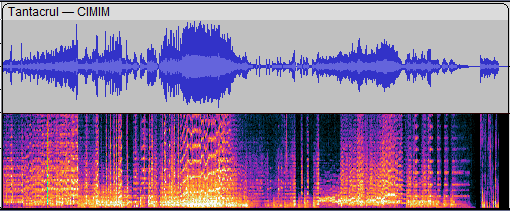Thorsten Loesch
Member of the Trade: Studio RaumklanG, Studio Cocktail
i doubt theres any audible difference between lithium batteries and supercaps (unless the gryphon is capable of more than its battery allows that is which i doubt as thats what it was designed for)
The Gryphon is based on tech I generated in 2559 (Thai Date, love it, even the ancient past is way ahead of everyone else's today) or so, which is about seven years ago. Back then it was among the best I could do on the original budget (199 USD intended retail for the original xDSD).
I have since had many occasions to experiment with super capacitors (and other things) and I find that all of the power supply elements have their own uses. It is all about relative discharge (and charge) speeds. Super Capacitors are great for situations that need high peak power quickly, like for example car drive trains, or indeed audio.
We must understand that music is not a steady state waveform as used in testing using test gear. Music looks like this.

The light blue colour is the average power, dark blue the peak in the music waveform (upper graph).
In the lower graph we see spectrum and we can see that low frequencies have the most energy.
So power drawn from the supply varies a lot with music and has high peaks at low frequencies relative to a (1kHz) steady state test signal.
In power supplies we use different parts for different frequency ranges or device works at.
Batteries work best with a near constant current draw. The same is incidentally true for "off mains" power supplies, both linear and switching.
Capacitors can provide "extra" current dynamically for peaks, but charge held in capacitors is relatively small next to batteries for the same size.
The small ceramic capacitors we place close to IC's are very "fast". We are talking near ideal operation up to tens of MHz, but they cannot store much energy. So at low frequencies (in the audio range) they become ineffective with a given signal current. Hence they are good for supporting power supply lines for individual digital IC's.
Electrolytic capacitors which we use on power supply lines are much "slower". Usually they can only operate well up to 10kHz or so, some "exotic" types are good up to a few 100kHz. But they can store much more energy, so they remain effective to much lower frequencies. normal values in portable gear tend to be ok down to perhaps 100Hz or so, it depends.
For really low frequencies their size becomes too small.
In desktop or big hifi products we can simply enlarge the values, making everything physically larger (and heavier and more expensive). In portable gear this is an issue, as usually we cannot.
So audio peak current needs to be supplied by the battery. The problem is that the chemistry in batteries is pretty lazy. So the battery is slow to ramp up current.
Meanwhile the step-up power supply that supplies the whole device (3.0V-4.2V battery to 5V or 5.7V for audio) will try to draw more current, you get an avalanche condition where peak power is limited by the slow battery chemistry and the battery voltage is being drawn lower and lower, until the battery shuts down.
So we need something that kind of "slots in" into the gap between moderate size electrolytic capacitors and battery or off mains supply.
Super Capacitors happen to be the answer. Of course, implementation is slightly non-trivial. You cannot just put them in parallel with a battery.
Here an actual illustration of what adding suitable super capacitors can do to peak output with music:

True, this is relevant only with difficult to drive headphones or say a portable bluetooth speaker etc.

Certainly, if I were to design an audio product today, it would incorporate super capacitors. Had I designed the Gryphon, not only would it have skipped a few extra op-amp stages that are functionally redundant and result from copy/paste merging two stand alone products, but it would have had super capacitors (and no OLED screen).
But I didn't have a hand in that product, other than having designed the products it was derived/copied from. So it is what it is.
Thor
Last edited:























